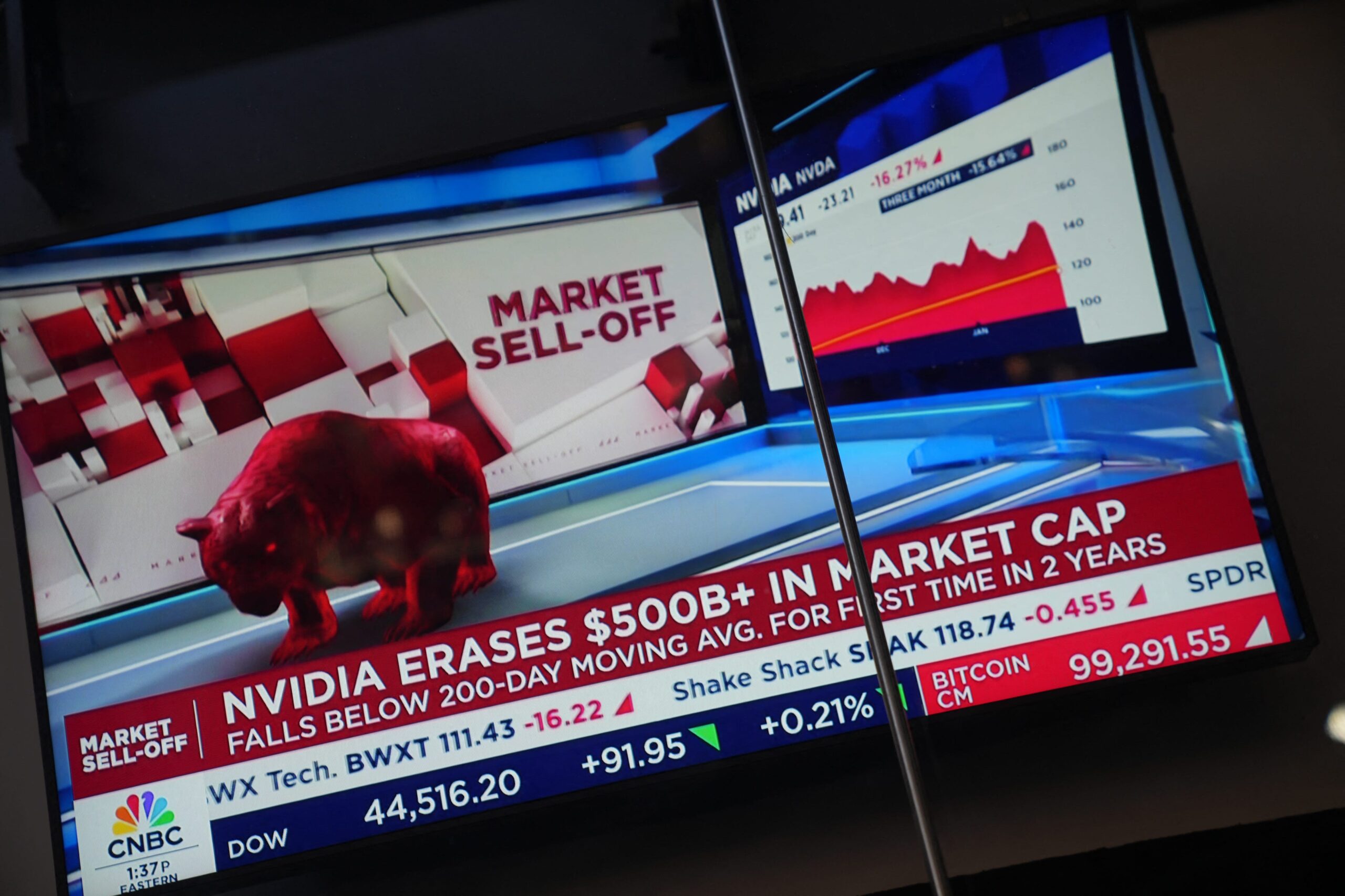
Market Turmoil: Stocks Plummet Amid Tariff Fears and Economic Uncertainty
U.S. stock markets experienced a significant downturn at the opening bell this Tuesday, rattled by the implementation of President Donald Trump’s newly enacted tariffs on goods from Mexico, Canada, and China. These trade barriers, coupled with retaliatory measures from affected nations, ignited concerns about a potential global trade war, sending investors scrambling for safety and injecting considerable volatility into the market.
The initial blow came from Trump’s decision to impose a 25% tariff on Mexican and Canadian goods, swiftly followed by an additional 10% tax on Chinese products, effectively doubling the total tariff rate to 20%. This action triggered immediate responses from the targeted countries. China retaliated by levying tariffs of up to 15% on select U.S. products, while Canadian Prime Minister Justin Trudeau announced his country would impose a 25% levy on U.S. goods as well. Mexico indicated plans to unveil its own retaliatory tariffs on Sunday, further escalating the trade tensions.
Adding fuel to the fire, Commerce Secretary Howard Lutnick hinted in a CNBC interview that even more tariffs could be on the horizon for Canada, deepening the sense of unease and uncertainty among investors.
The auto industry is emerging as one of the most vulnerable sectors in this escalating trade conflict. U.S. automakers heavily rely on Canada and Mexico for approximately 80% of their imports of essential auto parts. The potential disruption to supply chains and increased costs associated with the tariffs have already impacted the stock prices of major automakers. Shares of General Motors (GM) fell by 4.9%, while Ford experienced a decline of 2.34%.
As of 10:05 a.m. ET, the broad S&P 500 index had declined by 1.44%, equivalent to 84.18 points, settling at 5,765.54. The blue-chip Dow Jones Industrial Average plummeted by 1.36%, or 586.21 points, reaching 42,605.03. The technology-heavy Nasdaq Composite index also suffered a significant drop of 1.4%, or 256.77 points, closing in at 18,093.42. The benchmark 10-year Treasury yield also responded to the market jitters, sliding to 4.129%.
Oil prices continued their downward trend for a third consecutive session, driven by concerns that a protracted trade war could dampen global energy demand. Additionally, reports that oil-producing countries are planning to increase production further contributed to the downward pressure on prices. Oil was last trading down 1.33% at $67.46 per barrel.
Today’s stock market slump follows a substantial decline on Monday, during which the S&P 500 recorded its largest single-day drop since December. This decline pushed the index into negative territory for the year. President Trump’s confirmation on Monday afternoon that the tariffs would proceed as planned exacerbated the market’s anxieties.
The Nasdaq is rapidly approaching correction territory, defined as a 10% decline from its recent record high, highlighting the severity of the current market downturn.
Beyond the immediate impact of the tariffs, investors are also closely monitoring the upcoming monthly jobs report, scheduled for release on Friday morning. BeiChen Lin, an investment strategist at Russell Investments, emphasized the importance of the jobs report, stating, "Although tariff talk will likely dominate this week’s news cycle, investors shouldn’t lose sight of the importance of the jobs report. If job creation were to match or exceed consensus expectations, it would be an important reassuring signal at a time when macroeconomic uncertainty is elevated."
Lin advised investors to pay close attention to average hourly earnings, as this metric could provide insights into potential wage pressures. If wage growth shows signs of moderating, it could potentially pave the way for further interest rate cuts by the Federal Reserve, which could provide some relief to the market.
In the cryptocurrency market, Bitcoin continued its downward trajectory, erasing gains made over the weekend after President Trump announced a crypto strategic reserve. Some analysts suggested that the lack of specific details regarding the crypto strategic reserve also contributed to the market’s unease. Bitcoin was last trading down 2.47% at $84,049.25, falling below the $85,000 level at which it was trading when Trump initially announced the reserve plan. The uncertainties around the digital currency’s future, combined with the broader market anxieties, contributed to its decline.
The confluence of factors—tariffs, retaliatory measures, concerns about economic growth, and anxieties about the upcoming jobs report—has created a volatile environment for investors. The escalating trade tensions have introduced significant uncertainty into the global economic outlook, making it challenging for businesses to plan for the future and potentially impacting investment decisions.
The situation is further complicated by the Federal Reserve’s monetary policy. The Fed’s recent interest rate hikes have already raised borrowing costs for businesses and consumers. Any further tightening of monetary policy could exacerbate the economic slowdown. Conversely, a more dovish stance from the Fed could provide some support to the market.
The market’s reaction to Friday’s jobs report will likely provide further insights into the state of the U.S. economy and could influence the Federal Reserve’s future policy decisions. If the jobs report comes in stronger than expected, it could alleviate some of the concerns about an economic slowdown. However, a weaker-than-expected report could further fuel anxieties and potentially lead to additional market declines.
The current market turmoil underscores the sensitivity of the global economy to trade policy and geopolitical tensions. As the trade war between the U.S. and its trading partners continues to escalate, investors can expect increased volatility and uncertainty in the months ahead. The impact of these tariffs on businesses, consumers, and the overall economy remains to be seen, but the initial market reaction suggests that the potential consequences could be significant.
